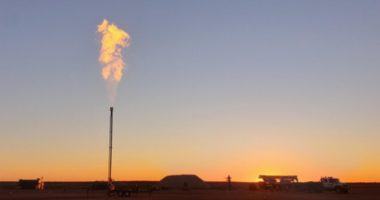- Galileo Mining (GAL) intersects significant sulphide mineralisation at the Castillo discovery at its Norseman project in Western Australia
- Six reverse circulation holes were drilled at Castillo to target a mineralised sulphide at the base of an ultramafic sill
- Results have now been received for all holes with new grades peaking at 1.38 g/t palladium, 0.23 g/t platinum, 0.09 g/t gold, 0.27 per cent copper and 0.28 per cent nickel
- Deeper diamond drilling has been planned for later in the year to explore for further mineralisation
- Galileo is up 27.5 per cent on the market with shares trading at $1.21 at 11:52 am AEST
Galileo Mining (GAL) has intersected significant sulphide mineralisation at the Castillo discovery at its Norseman project in Western Australia.
Six reverse circulation (RC) holes, for 1142 metres, were drilled at Castillo with all holes intersecting significant sulphide mineralisation.
Drilling aimed to target a mineralised sulphide unit at the base of an ultramafic sill.
First results from hole NRC266 were received in mid-May with up to 2.66 grams per tonne (g/t) palladium, 0.41 g/t platinum, 0.14 g/t gold, 0.48 per cent copper and 0.46 per cent nickel intersected.
Results include 19 metres at 1.38 g/t palladium, 0.23 g/t platinum, 0.09 g/t gold, 0.24 per cent copper and 0.28 per cent nickel from 124 metres, and 28 metres at 1.29 g/t palladium, 0.23 g/t platinum, 0.09 g/t gold, 0.24 per cent copper and 0.28 per cent nickel from 124 metres.
Initial samples from hole NRC266 are at the lab for nickel sulphide fire assay to test for rhodium, iridium, ruthenium and osmium.
The prospectivity of the area could be significantly enhanced if the samples are found to contain rhodium or other platinum group element (PGE) metals.
Additionally, downhole electromagnetic (EM) surveying of holes NRC266 and NRC269 has been completed with a strong EM response modelled as a single plate and interpreted to represent a sediment.
The company plans to undertake deeper diamond drilling later in the year to explore for further mineralisation below the sediment.
“Today’s results are a very important step forward as we have now shown the sulphides are carrying high-value metals in all six drill holes completed,” Managing Director Brad Underwood commented.
“The next round of RC drilling is due to begin late next week with a focus on drilling across strike to determine the thickest and highest grades in the easterly direction.”
“The extensive prospective strike, combined with the thick and consistent mineralisation drilled to date, indicates the potential for a large mineralised system.”
Galileo was up 27.5 per cent on the market with shares trading at $1.21 at 11:52 am AEST.






